The 10 Most Amazing Mud Brick Buildings Around the World
Scott Cai
September 26, 2024
[New Sancai Compilation and First Release] Mud is considered a nuisance in many parts of the world, but in others it is considered a primary building material. There is a large amount of clay on the earth, which provides the inhabitants with a strong building material for their homes. Made of clay, these muds were so durable that some mud-brick buildings lasted a thousand years.
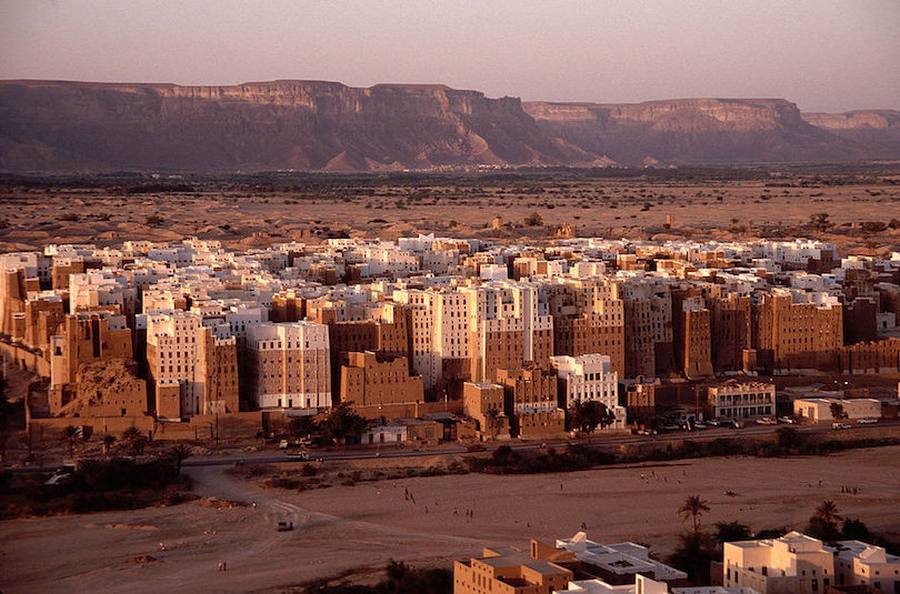
△Yemen. Shibam: Shibam is a city in central Yemen, nicknamed "Manhattan of the desert" for its unique 16th-century high-rise buildings. Some of the buildings are 16 stories high and 40 meters high, made of mud bricks and built to protect residents from Bedouin attacks. These mud buildings must be regularly maintained and renovated by residents to reduce erosion from wind and rain.
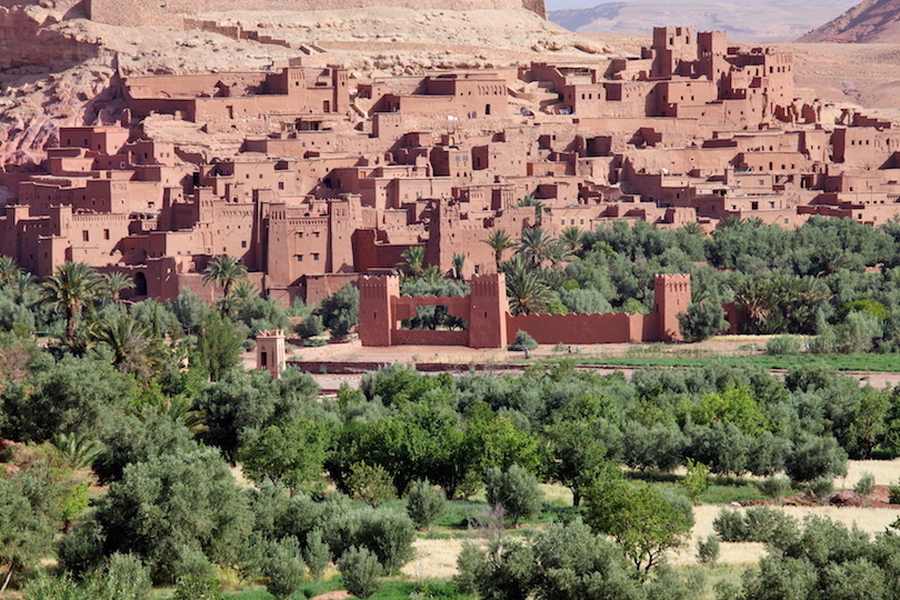
△ Morocco. Aït Benhaddou: Aït Benhaddou is a stunning fortified village and ancient city in the Ouarzazate region of southern Morocco; its clay castle It looks like a custom movie set. In fact, you may have already seen Ouarzazate, as many movies were filmed there (such as Lawrence of Arabia, Star Wars, and Warriors). Gladiator ) etc.). Located on the edge of the Sahara Desert, Ouarzazate is a popular stop for tourists traveling to and from other destinations, offering plenty of shopping and hotels. For photographers, this dry region is at its most beautiful in the evening and at sunset.
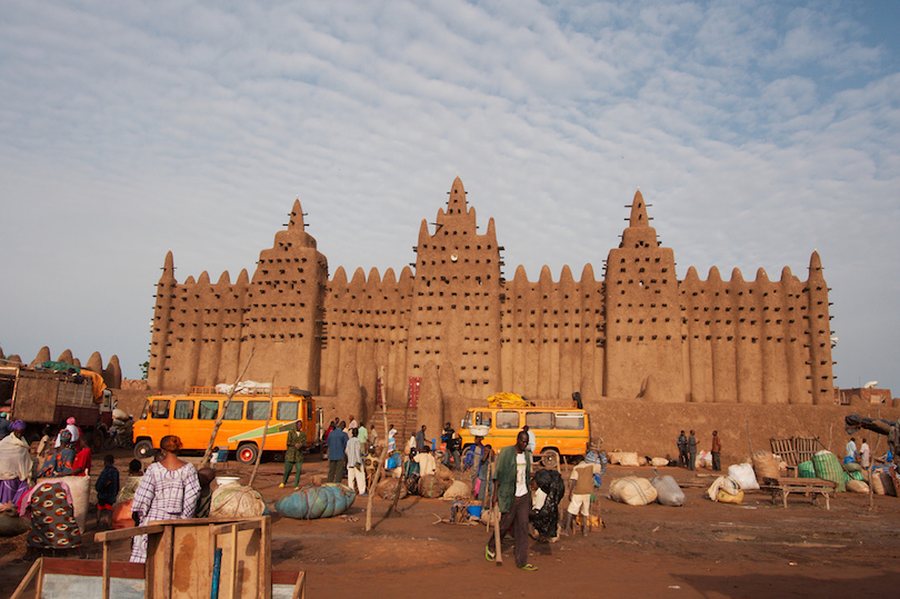
△ Marley. Great Mosque of Djenne: The Great Mosque of Djenne is the largest mud building in the world, built in Sudanese style and located in the Republic of Mali. The Great Mosque of Djenné also features protruding timbers for support, making annual repainting easier. The first mosque on the site was built around the 13th century, but the current building is about a century old. Djenné was once a sister city to ancient Timbuktu. The city’s colorful and varied souks, located at the foot of this mosque, are a must-see!
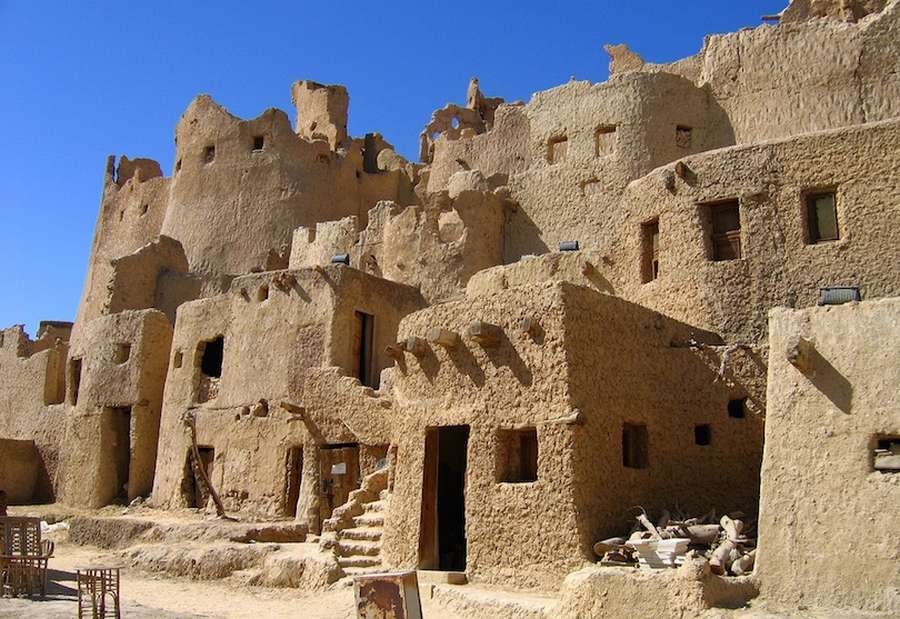
△ Egypt. Siwa Oasis: Siwa Oasis is located on an ancient trade route in Egypt's Western Desert. It was a vital oasis on this trade route because natural springs and shade palm trees allowed travelers to escape from the desert. Get respite. With the collapse of the Roman Empire, Siwa, once a defensive stronghold, began to decline. Today, Siwa is inhabited by descendants of the North African Berbers (Siwan Berbers) and is one of Egypt's most popular attractions.
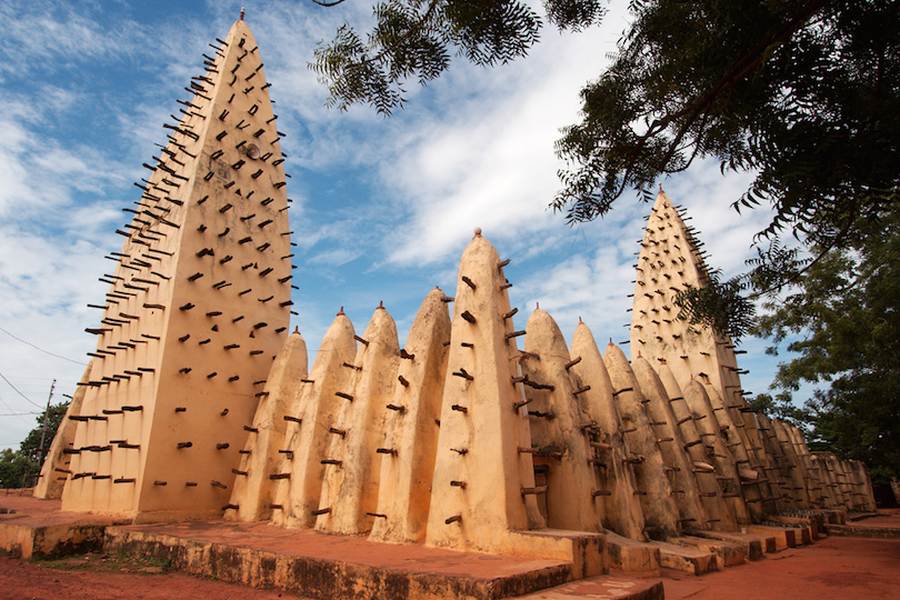
△ West Africa. Bobo Dioulasso Grand Mosque: The Bobo Dioulasso Grand Mosque in Burkina Faso, West Africa, is a century-old West African mosque with prominent wood and a style similar to that of a mosque. Djinguereber Mosque in Timbuktu. With the timbers in place, workers could climb the structure to add additional layers of clay, as clay and timber were the only materials used to construct the building. The mosque is located on the edge of the old city and has an unpleasant smell due to a heavily polluted stream nearby. Restoration work is currently underway on what locals call the Old Mosque of Bobo, but not in the traditional style, using cement instead of mud.
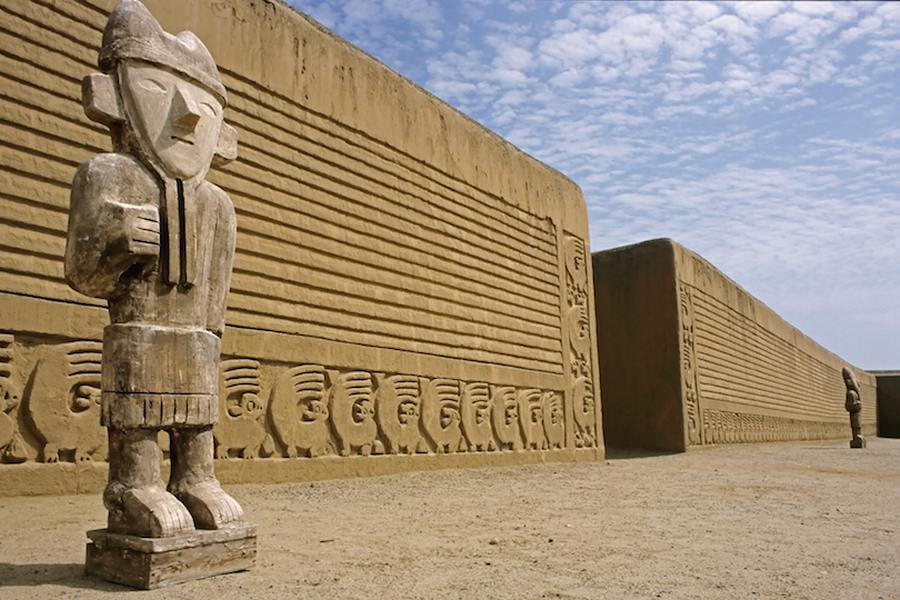
△ Peru. Chan Chan: Located in Peru’s Moche Valley, Chan Chan is a charming complex of adobe buildings dedicated to the Chimu kings. Eleven castles and a pyramid are surrounded by an 8-meter (26-foot) high wall. Many buildings appear to be well preserved. The Chimu were skilled metallurgists, potters, and carpenters. The lower classes lived outside the walls of Chang Chang, leaving the residences within the walls to the royal family and their servants. In 2006, archaeologists discovered warrior statues on the walls of Sea Palace.
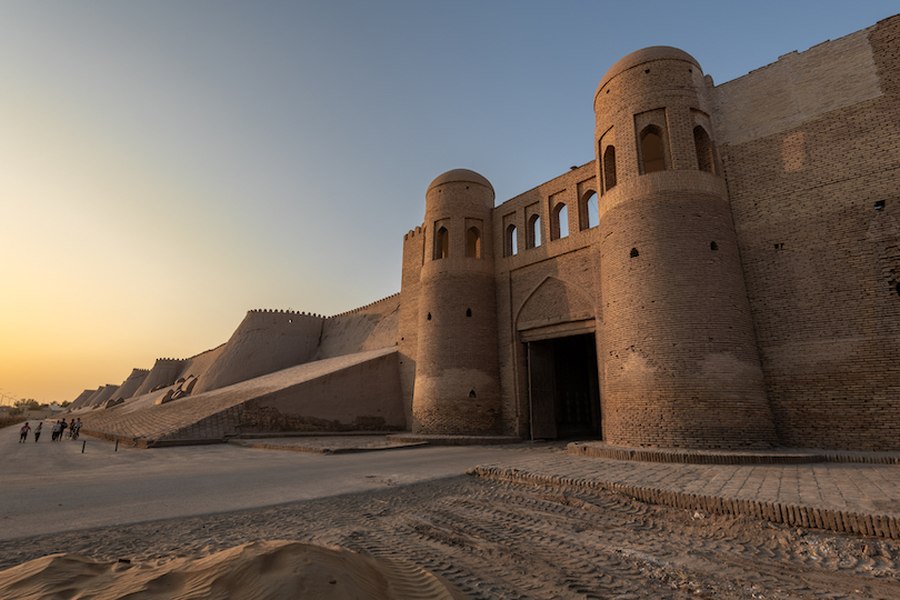
△ Uzbekistan. Khiva Wall: Khiva is located next to the Kyzylkum desert in Uzbekistan. It is a desert holy place and a gathering place for mosques and religious schools. The ancient city of Khiva was originally built 2,500 years ago. It is said to be built by Shem, the eldest son of Noah. It is called "Ichon-Qala" (meaning within the city walls) and is surrounded by The Walls of Khiva, a 10-meter (33-foot) high wall made of high-quality clay. The clay is mined from the shores of the lake in Ghovuk Kul. Mohammed is said to have built the Medina using clay mined from the same site.
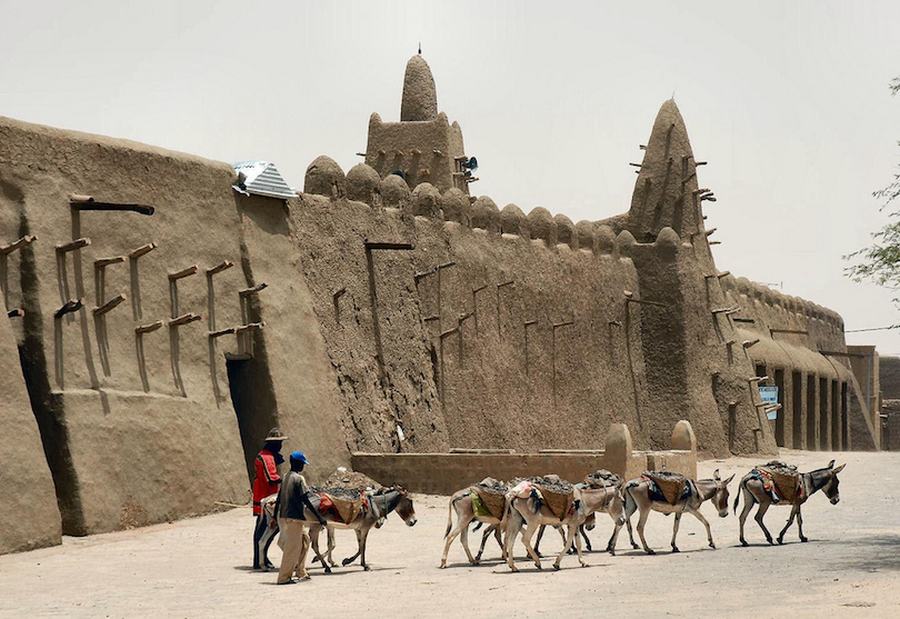
△ Marley. Djinguereber Mosque: Timbuktu is located in Mali (formerly known as French Sudan) in West Africa and is famous for being difficult to enter. The Jingribel Mosque in the territory was built in 1325. Its minaret has a unique shape and protruding wood. Due to the lack of rainfall in the area, the Kinglibel Mosque, built of mud and straw, retains its shape and strength due to the constant exposure to sunlight. Like many earthen structures around the world, this building once stood beside a busy camel road transporting gold and salt.
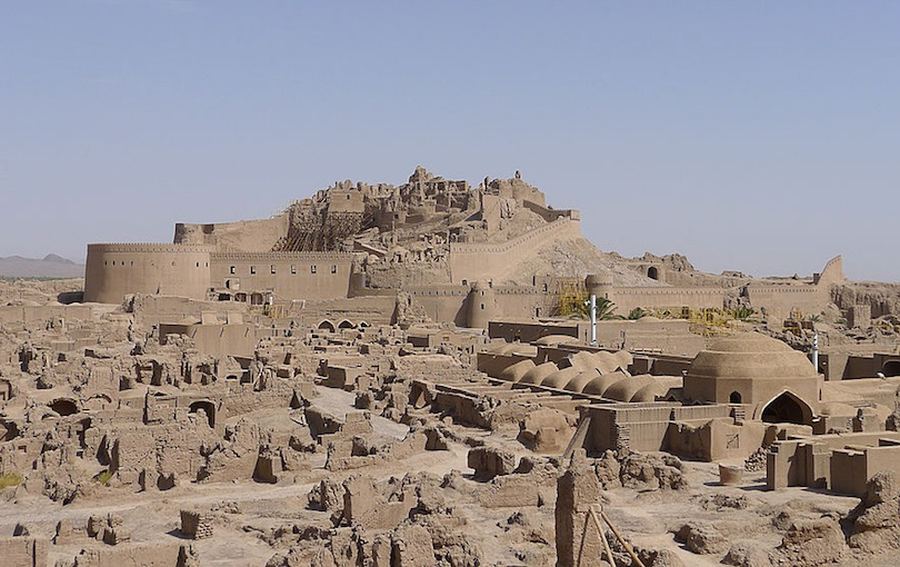
△ Iran. The ancient city of Bam (Arg-e Bam): The ancient city of Bam is located in southeastern Iran. It originated from the "Sassanid Dynasty" (or "Persian Second Empire") period (224-637 AD) and is the famous "Silk Road". ” a prosperous trading center on. The inhabitants of Bam produced silk and cotton clothing for trade. The castle covers an area of 6 square kilometers and is built entirely from clay and mud bricks made from palm trunks. Surrounded by thick walls and 38 watchtowers, the castle has a series of underground water canals that serve its approximately 12,000 residents. In 2003, an earthquake in Bam destroyed more than half of the houses and the historic mudbrick castle.
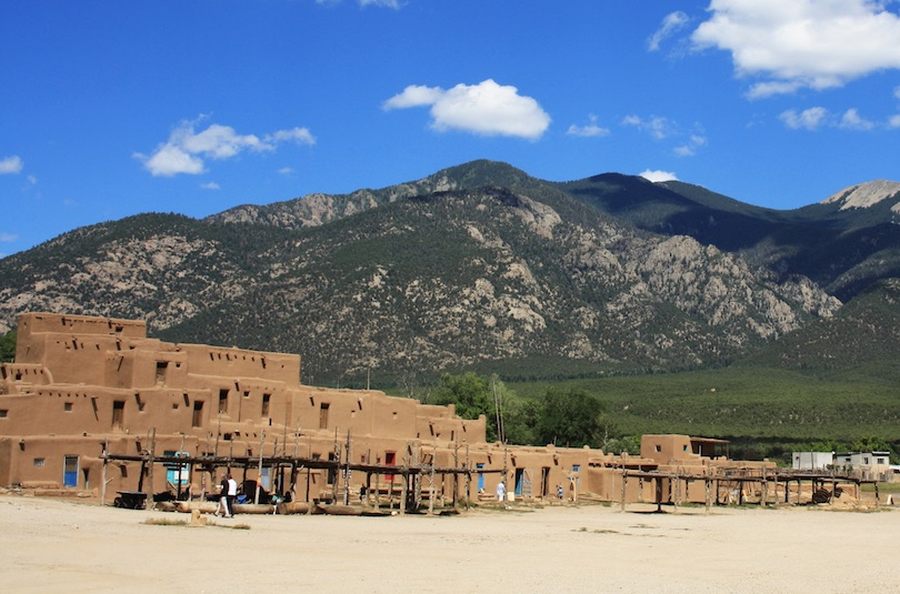
USA. Taos Pueblo: Taos Pueblo is an ancient settlement in New Mexico, United States, where native people have lived for about 1,000 years. Its mudbrick houses are made of sun-dried mudbricks coated with adobe mortar. Adobe is made from calcareous clay, mixed with straw for added strength. The walls of the house are thick because they are repainted every year as part of a traditional ceremony.
(Author: Mike Kaplan)
(Compiled by: Bai Ding)
(Editor: Jiang Qiming)
(Source of the article: Compiled and published by New Sancai)
